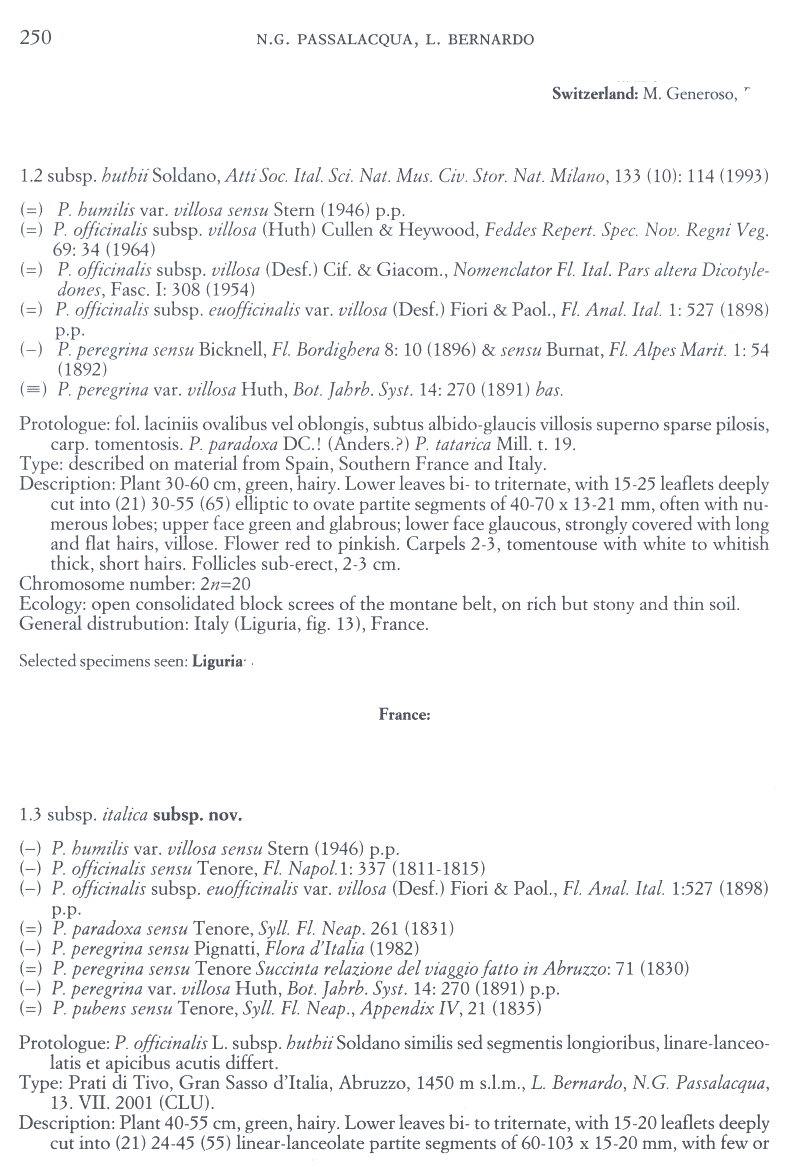accepted name (2005):
1818
Anderson see the reference of Baker below
Baker 1884
15. P. paradoxa, Anders., Monogr., No. 12 ; DC., Prodr., i., 66 ; Sweet., Brit. Flow.Gard., t. 19.—Stem 1—1 ½ foot long, hairy in the upper part, with never more than a single flower. Leaves 5—6 to a stem, green, and glabrous above, glaucous and pilose beneath, the lower cut up into 30—40 acute confluent segments, 1/2—3/4 inch broad, the largest not more than 1 ½ —2 inches long. Peduncle so short that the flower is amongst the upper leaves. Calyx and corolla just like those of officinalis and peregrina. Follicles 2—3, ovoid, tomentose, erect-arcuate. This not in any broad sense more than a variety of peregrina. Anderson identifies it with the Paeonia promiscua of Lobel, Gerard, and Ray, and says:—“ This is the latest in coming into flower of all Paeonies, excepting albiflora; its flowers seldom expand before the latter end of May. It forms a dense tuft of leaves and flowers more dwarf than humilis, and is the lowest in stature of all the species excepting mollis. From peregrina it differs in the leaves being small, ovate, and more glaucous ; the leaflets more divided, crowded, and imbricated; the ultimate fissures shallow and obtuse ; in the germens being close pressed together and very little separated even in the ripe follicles." Our most typical wild specimens are from Montpellier and Trieste. A full account of it will be found in Sweet's Flower Garden under the figure cited. It is not recognised as a species by any of the recent Continental Flora writers.“
Lynch 1890
Sub-genus Paeon.
19. P. paradoxa, Anders.; Sweet, Brit. Fl. Garden, t. 19.—
About 1 foot high, the dwarfest except mollis and sessiliflora. Forms a dense tuft of leaves. Leaflets three-lobed and incised, the fissures short and obtuse, much imbricated, and with red margins. Carpels pressed close together, and little separated in the ripe fruit. Corolla purple-red. A close ally of peregrina, from which it is known by smaller ovate and more glaucous leaves, with more divided, crowded, and imbricating leaflets. Montpellier and Trieste.
Cullen & Heywood 1995
in Tutin: Flora Europaea
(d) Subsp. microcarpa (Boiss. & Reuter) Nyman, Consp. 22 (1878) (P. microcarpa Boiss. & Reuter, P. humilis Retz., P. officinalis subsp. humilis (Retz.) Cullen & Heywood, P. paradoxa G. Anderson): Stems and petioles pubescent. Leaflets divided to not more than 1/3 of the distance to base. Follicles glabrous. S, W. Europe.
Passalaqua & Bernardo (2004)
in The Genus Paeonia in Italy (2004)
